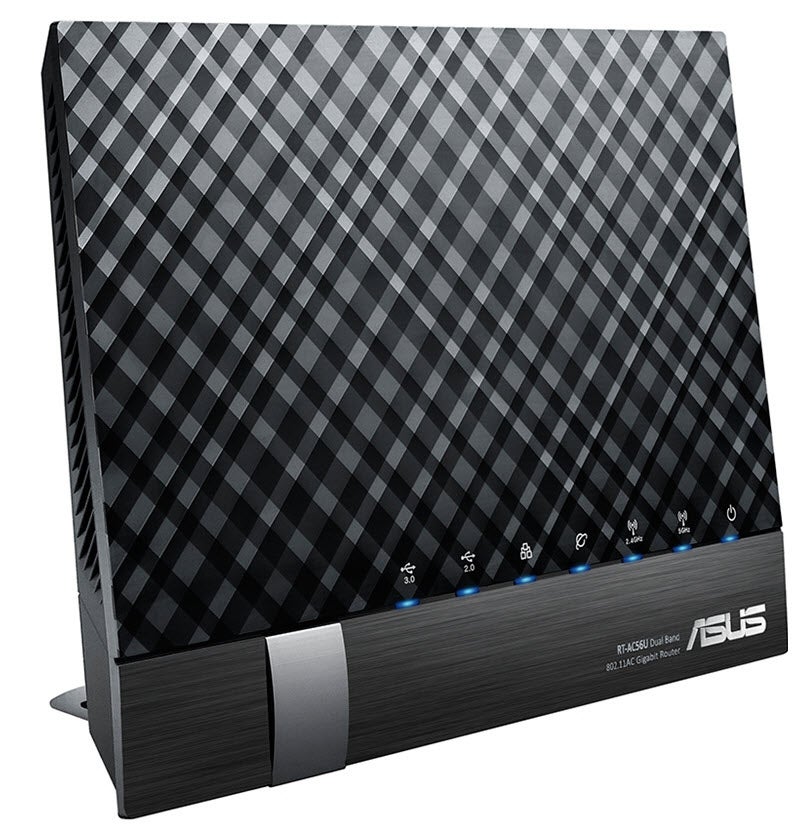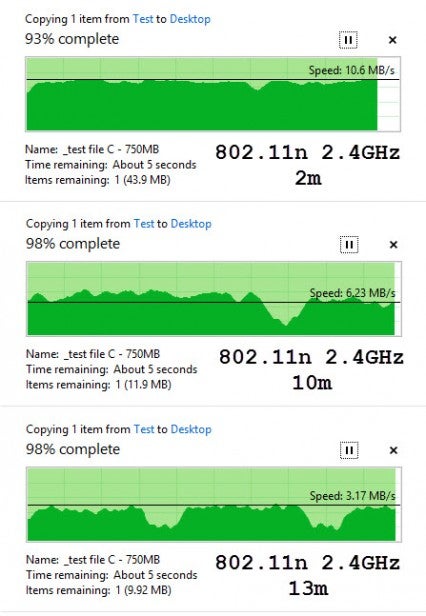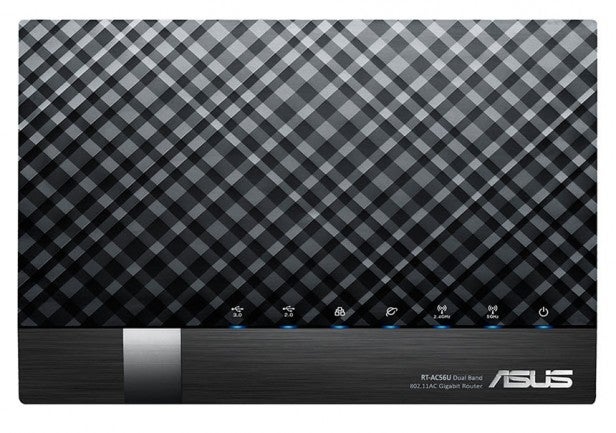Asus RT-AC56U 802.11ac router Review - Performance, Value & Verdict Review
Performance, Value & Verdict
Asus' impressive 802.11ac router range adds a budget champion

Sections
- Page 1 Asus RT-AC56U 802.11ac router Review
- Page 2 Performance, Value & Verdict Review
Asus RT-AC56U – Performance
 So did Asus get away with the cuts in the AC56U? Yes and no and they are most clearly illustrated in the router’s 802.11ac results. At our three test distances of 2m and 10m line of sight and 13m behind two standing walls it achieved a barnstorming 44.9MBps (359.2Mbps), impressive 36.3MBps (290.4Mbps) and very disappointing 16.4MBps (131.2Mbps).
So did Asus get away with the cuts in the AC56U? Yes and no and they are most clearly illustrated in the router’s 802.11ac results. At our three test distances of 2m and 10m line of sight and 13m behind two standing walls it achieved a barnstorming 44.9MBps (359.2Mbps), impressive 36.3MBps (290.4Mbps) and very disappointing 16.4MBps (131.2Mbps).
In context this makes the AC56U the second fastest router we’ve tested at 2m (behind the AC68U), by a whisker the second fastest at 10m (but significantly behind the AC68U) and way off the pace at 13m where most 802.11ac routers were 50 per cent faster and the AC68U nearly doubled it.
The drop off with range is caused by the reduction from a 3×3 to 2×2 antenna array with Asus showing it has nailed the optimum performance of 802.11ac, but that it can’t compensate for the reduction in antenna power as distance is increased.
It was a similar, though less pronounced story with 802.11n 5GHz and 2.4GHz.  With 5GHz (graphs in the gallery above) the AC56U achieved 23.7MBps (189.6Mbps), 20MBps (160Mbps) and 8.55MBps (68.4Mbps) – again near the very top at close range, falling behind the fastest routers at midrange and below most premium models at long range.
With 5GHz (graphs in the gallery above) the AC56U achieved 23.7MBps (189.6Mbps), 20MBps (160Mbps) and 8.55MBps (68.4Mbps) – again near the very top at close range, falling behind the fastest routers at midrange and below most premium models at long range.
Again here the AC68U nearly doubled its 13m result hitting 16.9MBps (135.2Mbps) and the majority of 802.11ac routers reach double figures here for their 802.11n 5GHz performance.
Finally 802.11n 2.4GHz achieved 10.6MBps (84.8Mbps), 6.23MBps (49.84Mbps) and 3.17MBps (25.36Mbps). Here 2m performance is strong, 10m noticeably weak and the AC68U nearly triples it at 13m where it managed 8.94MBps (71.52Mbps).
The 13m graph also shows significant peaks and troughs in data rates which would dramatically affect streaming video where consistency is crucial.
There was one significant surprise left though: USB.  It is key here that the AC56U shares the same significant horsepower increase seen inside the AC68U and it actually bested its standout results over USB 2.0 achieving 18.6MBps (148.8Mbps) verses 14.9MBps (119.2Mbps) and matching its 12.8MBps (102.4Mbps) over USB 3.0.
It is key here that the AC56U shares the same significant horsepower increase seen inside the AC68U and it actually bested its standout results over USB 2.0 achieving 18.6MBps (148.8Mbps) verses 14.9MBps (119.2Mbps) and matching its 12.8MBps (102.4Mbps) over USB 3.0.
Yes again the older standard is outperforming the newer, which shows USB 2.0 remains far from a bottleneck but also adds credence to talk USB 3.0’s higher power demands can be counterproductive. We’ll be looking into this.

Should I buy the Asus RT-AC56U?
Overall the answer is yes. At £124.99 the AC56U is the cheapest 802.11ac router we’ve reviewed and a significant saving on the £189.99 AC68U. It performs extremely well in 5GHz short and midrange distances and while it drops off at long distances compared to premium 802.11ac routers we think its purpose is to convince those that would’ve bought a premium 802.11n router (still typically over £100) to make the step up.
Furthermore while 802.11n routers can match or in some cases slightly best the AC56U in 802.11n 2.4GHz performance, its extra processing power combined with 802.11ac and Beamforming (which also benefits 5GHz wireless n) see it streak away from them in all 5GHz speeds. The success story here is Asus has made buying a premium 802.11n router pointless.
Where the AC56U isn’t so compelling is in seeing it as a saving for those already in the market for a premium 802.11ac router. Compared to the £190 AC68U it does offer a large saving, but if you prioritise range over peak speeds then the extra £15 to upgrade to the D-Link 868L or £35 to upgrade to the Asus AC66U are worth it.
Verdict
The AC56U doesn’t quite have the bargain basement price tag that could’ve changed the industry, but it is enough to do serious damage to premium 802.11n router sales. It’s faster than them and only marginally more expensive.
Trusted Score
Score in detail
-
Performance 8
-
Value 9
-
Features 8
-
Build Quality 8
-
Usability 9
-
Design 8

